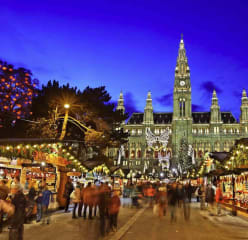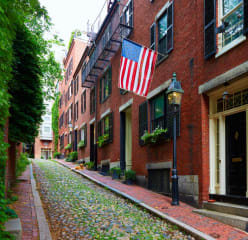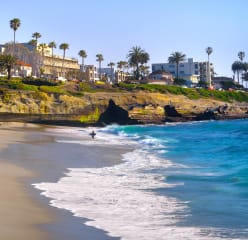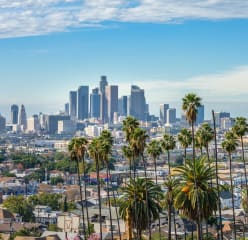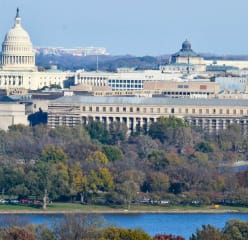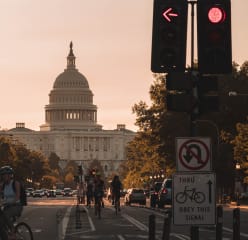Getting around D.C. using public transport
Intimidated at the thought of learning to ride the metro or city bus? Don’t be! This article outlines how to easily navigate public transport in D.…

Washington D.C. has one of the best public transportation systems in America. It’s known for its efficiency, cleanliness, and ease of use. Hundreds of thousands of riders use public transport in D.C. every day. So, learning the ins and outs can make your commuting life much simpler. If you prefer an easier solution than learning on your own, let technology do the hard work. As a tenant of a Blueground apartment, you get exclusive access to a Guest App. From this app, you can pay rent, schedule cleanings, request maintenance, and browse through neighborhood advice. All of this can be done from the palm of your hand whilst your riding around D.C. public transport.
Metrorail
Riding the Metrorail is one of the most common forms of public transport in DC among locals. If you are a first-time rider, you should know that there are six color-coded metro lines. The colors are: red, orange, yellow, green, blue, and silver. Every train car has an electronic sign on the exterior marking the color and direction of the train. If you need to ride the blue line, look for wording on the train that spells out the blue lines final stop. Additionally, using the system map can help you determine if you are on the correct train.

If your destination requires that you take two different lines, that won’t be a problem at all. You’ll be able to switch lines at one of the many transfer stops.
Some of the popular stops include the Smithsonian/National Mall which you can reach via the orange, blue, or silver lines. Woodley Park-Zoo/Adams Morgan is another popular stop that is accessible via the red line. Lastly, the Gallery Place-Chinatown stop is reachable by the red, yellow, or green lines.
Metrorail train schedule
- Monday through Thursday – 5:00 a.m. to 11:30 p.m.
- Friday – 5:00 a.m. to 1:00 a.m.
- Saturday – 7:00 a.m. to 1:00 a.m.
- Sunday – 8:00 a.m. to 11:00 p.m.
Trains run more often during peak hours, which occurs during the weekday morning and evening commute. You can expect trains to arrive during these hours every eight minutes. For stations that serve more than one line, those trains arrive every three to four minutes. When it’s not peak hours, trains come every 12-20 minutes depending on the line.
To pay for your Metrorail trip, you must use the SmarTrip card. This card is a rechargeable fare card. You can load the card using cash, debit, or credit cards at any Metro station. If you prefer, you can add money to your card online. To plan a trip and see what the cost would be, use the helpful trip planner tool.
Lastly, you can bring your bicycle to the Metrorail as long as the car is not too crowded. As a general rule of thumb, check the first or last cars, as those tend to be the least crowded.
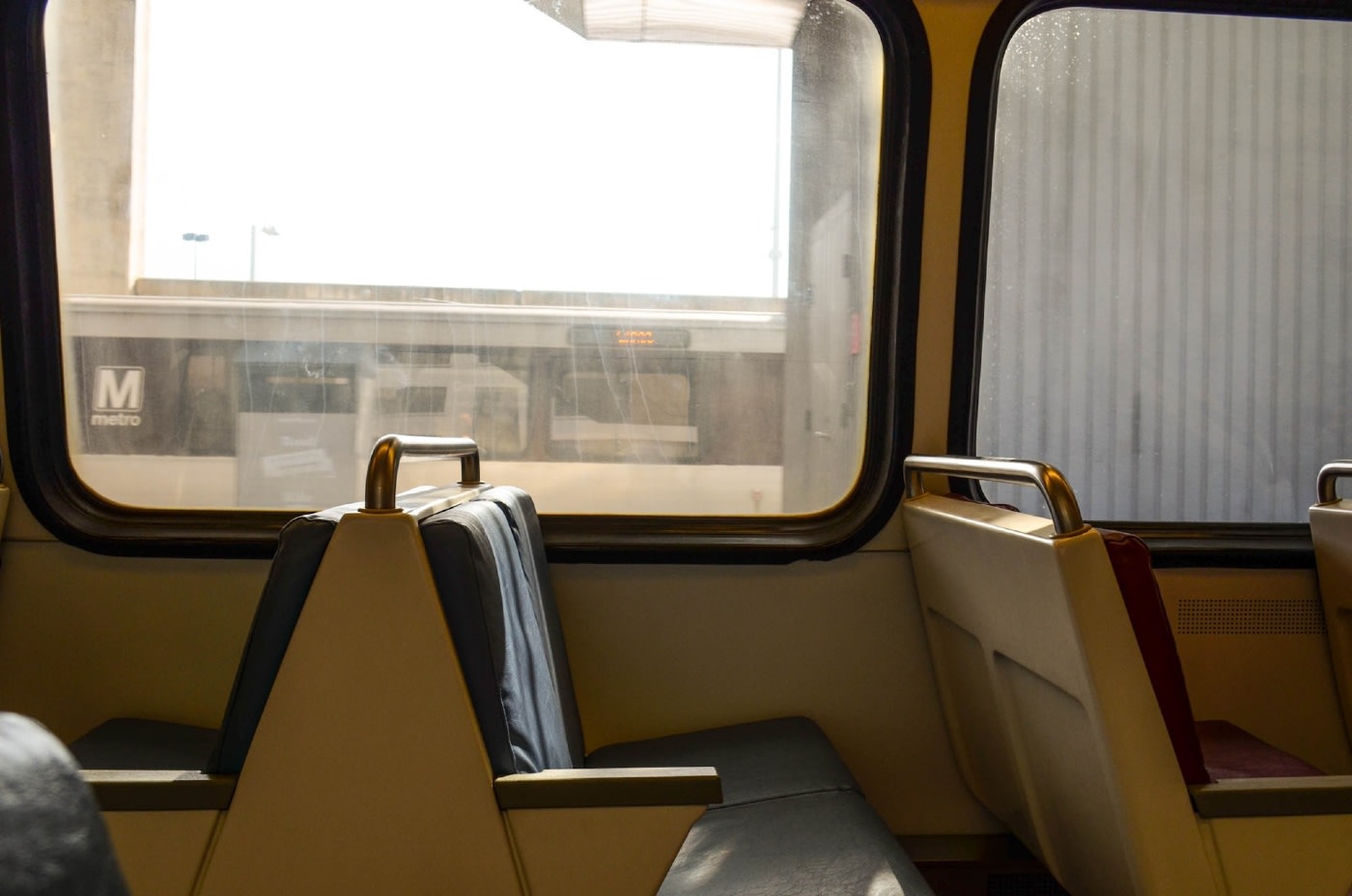
Metrobus
The Metrobus is also part of DC’s metro system. There are hundreds of routes throughout the city for riders to enjoy. To cover all those routes it takes a fleet of 1,400 buses. Each bus uses natural gas or runs on “hybrid” to help keep the air clean and pollution-free.
Like the Metrorail, riders of the Metrobus can also use the SmarTrip card to pay for their fare. Here are more details about fares and payment options.
Metrobus fares
- You have the option to pay with cash and coins. But, you must provide exact change.
- Two children under the age of five are free when accompanied by a paying passenger.
- Price for regular fares
- $2.00 using a SmarTrip card or cash
- $1.00 for seniors and people with a disability
- Price for the express bus
- $4.25 using a SmarTrip card or cash
- $2.10 for seniors and people with a disability
- Price for airport express routes
- $7.50 using a SmarTrip card or cash
- $3.75 for seniors and people with a disability
When planning to take the bus to the Dulles International Airport, take Metrobus 5A. If you’re heading to the Baltimore Washington International Thurgood Marshall Airport take Metrobus B30.
Just like the Metrorail, bicycles are welcome on the Metrobus. There are bike racks attached to the front of each bus where you can place and lock your bike to.
DC Circulator
The DC Circulator is a bus service that offers affordable public transport in DC. Designed for hop-on-hop-off convenience, the DC Circulator travels along six routes and costs only $1 per ride. As a rider, you can explore the neighborhoods of Adams Morgan, Woodley Park, Dupont Circle, U Street, Georgetown, and Capitol Hill. Even more, the bus runs a route along National Mall, so passengers can visit DC’s historical monuments and memorials. Take a look at the schedule of each route. The DC Circulator buses run every 10 minutes.
DC Streetcar
Another preferred method of travel for DC residents is the DC streetcar. It runs along rails with a low floor which makes it quick to board and is well-suited for wheelchair accessibility. Every streetcar can hold roughly 150 people, seated and standing. On average, the speed of the DC streetcar ranges from 25 to 35 miles per hour.
One huge advantage of riding the streetcar is the price. Currently, there is no fare, it’s free for all riders! So, people can move about the District with ease without spending a penny.
There is only one route and that is the ‘H Street/Benning Road Line.’ It travels east from Union Station toward Oklahoma Avenue. And it runs west from the Benning Road/Oklahoma Avenue stop. You’ll only need to wait about 10 to 15 minutes for the next streetcar.
DC Streetcar schedule
- Monday through Thursday – 6:00 a.m. to 12:00 a.m.
- Friday – 6:00 a.m. to 2:00 a.m.
- Saturday – 8:00 a.m. to 2:00 a.m.
- Sunday – 8:00 a.m. to 10:00 p.m.

